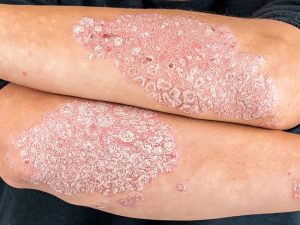Why You Need a Full Skin Check and What to Expect
If you could schedule an appointment once a year that takes a half hour and could save your life, as it has saved countless others, wouldn’t you do it?
An American dies of melanoma – the deadliest type of skin cancer – every hour of every day, each year. It’s the most common form of cancer in the U.S. and its rate has doubled among women under 40 over the last 30 years.
Catching melanoma early dramatically reduces the chance of death. The Journal of the National Cancer Institute found that a skin exam slashed mortality by nearly two-thirds.
So the professionals at Associated Dermatology urge every adult – no matter your age, race or sex – to come in for a skin check.
1. Self-exams are a great start, but they aren’t sufficient– Professionals in the field say we should all check our skin periodically for irregularities – the ABCDE check. If you note a mole or spot on your skin that is Asymmetrical, or oddly shaped; has an uneven Border, is especially dark or multi-Colored; has a Diameter more than the size of a pencil eraser; or is Evolving over time, you need to see a dermatology professional.
But even if you don’t, they recommend an annual check-up. You’re not trained to catch subtle cues, and certain areas, like your back, are just physically challenging to self-examine.
2. Melanomas can appear anywhere. Although sun exposure is a cause of skin cancer, the cancer doesn’t necessarily appear at the spot of exposure. Some of the the most surprising sites of melanoma include under toenails, between the buttocks and on the heel of the foot. A professional knows to check everywhere.
3. There are other forms of skin cancer. Although basal cell and squamous cell carcinomas are rarely fatal, they can do grievous damage to localized areas of the body. A professional should check you for them too.
4. It’s important to establish a baseline. If you wait until you identify potential trouble, your dermatology professional won’t have a benchmark to compare your skin against. Visiting a dermatology practice annually allows a professional to track changes in your skin. That can lead to faster detection of cancer and other issues.
5. You’ve experienced sunburn, or used a tanning bed. Anyone who has ever done either is at increased risk of skin cancer.
6. Dark skin color does not prevent skin cancer. “Nobody is immune regardless of skin color,” says Gittings. “A lot of people don’t realize that Bob Marley died of melanoma.”
So what does a skin check-up entail? Gittings says if you visit Associated Dermatology, a nurse will ask you about your concerns and prepare you for the exam. A provider will examine your entire body – or as much as you are comfortable with exposing. Using a specialized light, they will identify spots to monitor and note changes from previous exams.
The provider might spray nitrogen on any atypical cells that may be pre-cancerous, freezing them before they can become cancerous. If a biopsy is indicated, they can do it right there, quickly with minimal pain. Results are generally available in 7-10 days.
The whole exam takes a half-hour if done by an experienced professional.
Associated Dermatology combines comprehensive care with compassion and professionalism. Their expert providers have decades of experience in dermatology. Contact them for your first appointment – or follow up on your last one – at (408) 442-3534 or schedule an appointment online at associateddermhelena.com.
You might just be saving your life.







